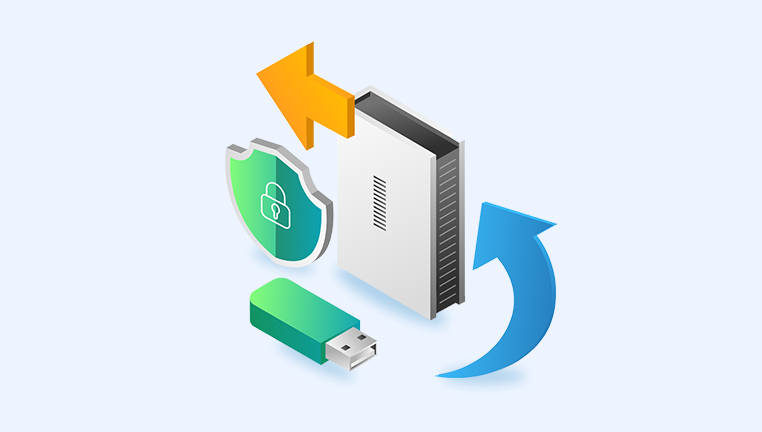Data recovery agents are specialized software or hardware tools designed to retrieve lost, corrupted, or inaccessible data from storage devices. This process is essential in scenarios where data loss occurs due to accidental deletion, hardware failure, software corruption, or other unforeseen events. Understanding data recovery agents involves exploring their functions, types, applications, and the underlying technologies they utilize. Here's an in-depth look at these aspects:
What is Data Recovery?
Data recovery is the process of salvaging data from damaged, failed, corrupted, or inaccessible storage devices when it cannot be accessed normally. Common storage devices include hard disk drives (HDDs), solid-state drives (SSDs), USB flash drives, CDs, DVDs, and other electronic devices.

Types of Data Recovery Agents
Data recovery agents can be categorized into two main types: software-based and hardware-based.
Software-Based Data Recovery Agents
These are programs designed to scan and retrieve lost data from storage media. They work by identifying and reconstructing data from storage sectors that the operating system can no longer access.
File Recovery Software: This type of software focuses on recovering individual files that have been deleted or lost due to software issues. Examples include Recuva, EaseUS Data Recovery Wizard, and Stellar Data Recovery.
Partition Recovery Software: These tools are used when entire partitions or volumes are lost or corrupted. They can restore the partition table and recover data within the partitions. Examples include MiniTool Partition Wizard and TestDisk.
System Recovery Software: These programs are designed to recover the entire system, including operating system files and settings. They are often used after system crashes or severe corruption. Examples include Acronis True Image and Macrium Reflect.
Hardware-Based Data Recovery Agents
These are specialized devices or tools used in professional data recovery labs. They often require a high level of expertise and are used for severe physical damage cases.
Disk Imaging Devices: These tools create a bit-by-bit copy of the damaged storage device, which can then be used to attempt data recovery. Examples include DeepSpar Disk Imager and Atola Insight.
Clean Room Tools: Used in specialized environments to repair physically damaged drives. These environments are free from dust and contaminants, which is crucial for working on open hard drives.
Firmware Repair Tools: These tools address issues with the drive’s firmware, which can sometimes prevent data access. They require specific knowledge of the drive's architecture and firmware.
How Data Recovery Agents Work
Data recovery agents operate through various techniques and processes depending on the type of data loss and the condition of the storage device.
Software-Based Recovery Techniques
File Carving: This technique involves scanning the storage media for file signatures and reconstructing files without relying on the file system's metadata. It's particularly useful when the file system is damaged.
File System Repair: Some software can repair minor file system errors that might be preventing access to data. This includes fixing corrupted Master File Table (MFT) on NTFS systems or repairing directory structures on HFS+ systems.
Deep Scanning: This involves a thorough scan of the storage device to find and recover files. It may take longer but can recover files even if they have been deleted and partially overwritten.
Hardware-Based Recovery Techniques
Head Stack Replacement: In cases of physical damage to the read/write heads of a hard drive, professionals may replace the head stack assembly to restore functionality and access the data.
Platter Transplant: If the platters (disks inside the hard drive) are damaged, they might be transplanted into a working drive chassis to recover the data.
Firmware Restoration: Some hard drives suffer from firmware corruption, making them inaccessible. Tools that can rewrite or repair the firmware can help in these scenarios.
Applications of Data Recovery Agents
Data recovery agents are used in various scenarios, from personal data recovery to professional and enterprise-level data salvage operations.
Personal Data Recovery
Individuals often use data recovery software to recover lost photos, documents, videos, and other personal files. Common scenarios include accidental deletion, formatting, or corruption due to software issues.
Professional Data Recovery Services
Professional services utilize advanced data recovery agents and techniques to recover data from severely damaged or complex storage systems. They cater to businesses, government agencies, and other organizations needing to recover critical data.
Enterprise Data Recovery
Large organizations often implement data recovery solutions as part of their disaster recovery and business continuity plans. These solutions ensure that data can be quickly recovered in the event of data loss incidents, minimizing downtime and data loss.
Technologies Behind Data Recovery Agents
The effectiveness of data recovery agents depends on several underlying technologies:
File System Knowledge: Understanding various file systems (e.g., NTFS, FAT, HFS+, ext4) is crucial as different file systems store and manage data differently.
Data Carving Algorithms: These algorithms help identify and reconstruct files based on known file signatures, enabling recovery even when the file system is severely damaged.
Disk Imaging: Creating an exact copy of the storage media helps preserve the original data during the recovery process, allowing multiple recovery attempts without further risking data loss.
Error Correction Codes (ECC): Some data recovery tools utilize ECC to correct minor errors and recover data from slightly corrupted sectors.
Artificial Intelligence (AI) and Machine Learning (ML): Advanced data recovery tools are beginning to incorporate AI and ML to improve their recovery rates by learning from previous recovery attempts and predicting the best recovery strategies.
Challenges in Data Recovery
While data recovery agents are powerful, they also face several challenges:
Overwritten Data: Once data is overwritten, recovery becomes significantly more difficult and often impossible with standard tools.
Encryption: Encrypted data poses a significant challenge for recovery unless the encryption keys are available.
Physical Damage: Severe physical damage, such as from fire or water, can sometimes render data unrecoverable even with advanced hardware tools.
Complex File Systems: Newer or less common file systems may not be well supported by existing data recovery tools, making recovery more challenging.
Data recovery agents play a vital role in rescuing lost data from various storage devices. They come in both software and hardware forms, each with its specific applications and techniques. By understanding the underlying technologies and challenges, users can make informed decisions about which data recovery agent to use in different scenarios. Whether for personal use or professional services, these tools help mitigate the impact of data loss and ensure that valuable information can be retrieved whenever possible.




